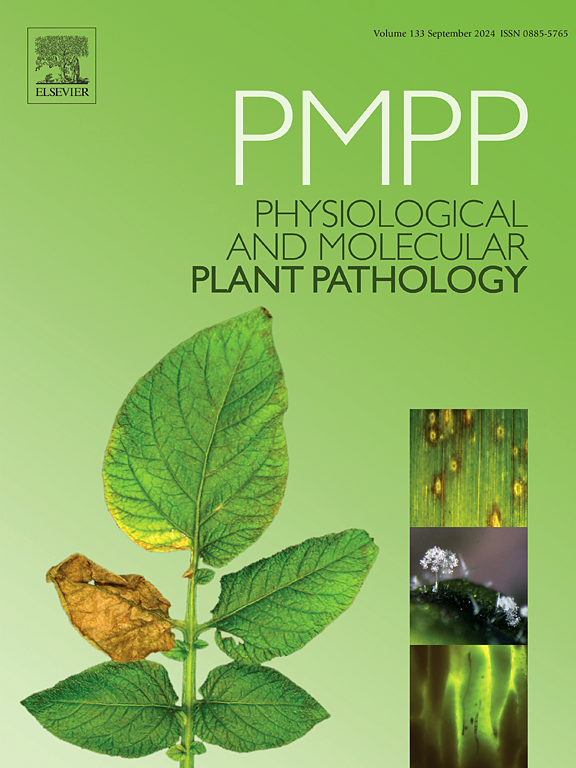Identification, characterization and genetic diversity of Ralstonia pseudosolanacearum causing bacterial wilt of tomato in Himachal Pradesh, India
IF 2.8
3区 农林科学
Q2 PLANT SCIENCES
引用次数: 0
Abstract
Ralstonia solanacearum species complex (RSSC) is a group of highly destructive phytopathogens known for their significant genetic and phenotypic variability. Strains of this complex affect a wide range of crops, as well as ornamentals and weeds. In the present study, bacterial wilt-infected tomato plants were collected from 42 tomato growing villages of Mandi, Kullu, Solan and Kangra districts of Himachal Pradesh, India during summer of 2024. A total of 158 isolates were identified by the RSSC-specific primer pair 759/760. Using the biovar classification scheme, 111 isolates (70.25 %) were classified as biovar 4 and 47 (29.75 %) as biovar 3. Further, phylotype-specific multiplex PCR assigned all 158 isolates to phylotype I identifying them as R. pseudosolanacearum. Morphological analysis of a representative strain (HToR31) using transmission electron microscopy revealed rod-shaped cells measuring 0.55–0.65 μm in diameter and 1.30–1.80 μm in length, with a polar flagellum. Furthermore, partial egl gene sequencing of 27 randomly selected strains from the four districts revealed the presence of six sequevars: I-44, I-46, I-47, I-57, I-70, and I-71. Notably, all sequevars except I-47 were reported for the first time in India. This study provides valuable insights into the genetic and biovar diversity of RSSC strains in Himachal Pradesh, India.
求助全文
约1分钟内获得全文
求助全文
来源期刊
CiteScore
4.30
自引率
7.40%
发文量
130
审稿时长
38 days
期刊介绍:
Physiological and Molecular Plant Pathology provides an International forum for original research papers, reviews, and commentaries on all aspects of the molecular biology, biochemistry, physiology, histology and cytology, genetics and evolution of plant-microbe interactions.
Papers on all kinds of infective pathogen, including viruses, prokaryotes, fungi, and nematodes, as well as mutualistic organisms such as Rhizobium and mycorrhyzal fungi, are acceptable as long as they have a bearing on the interaction between pathogen and plant.

 求助内容:
求助内容: 应助结果提醒方式:
应助结果提醒方式:


